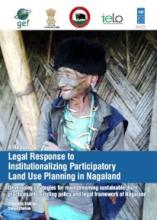Land Library Search
Through our robust search engine, you can search for any item of the over 73,000 highly curated resources in the Land Library.
If you would like to find an overview of what is possible, feel free to peruse the Search Guide.
/ library resources
Showing items 1 through 9 of 14.Land area of 3131.5451 hectares in Ou Chum district, Ratanakiri province has downsized from Forest Cover 2002 and reclassified as “State Private Land” for granting purpose as communal ownership to 4 Krung indigenous communities in Puy commune, Ou Chum district, Rattanakiri province.
Land area of 846.8997 hectare in Ou Chum district, Ratanakiri province has downsized from Forest Cover 2002 and reclassified as "State Private Land" for granting purpose as communal ownership to 165 families of Kreung indigenous community on 20 land parcels including 10 parcels for residential, 1
Land area of 605.8134 hectare in Ou Chum district, Ratanakiri province has downsized from Forest Cover 2002 and reclassified as "State Private Land" for granting purpose as communal ownership to 96 families of Tumpoun indigenous community on 16 land parcels including 07 parcels for residential, 0
Land area of 1496.3127 hectare in Ou Chum district, Ratanakiri province has downsized from Forest Cover 2002 and reclassified as "State Private Land" for granting purpose as communal ownership to 205 families of Kreung indigenous community on 21 land parcels including 02 parcels for residential,
This brief presents a review of 161 Intended Nationally Determined Contributions (INDCs) submitted on behalf of 188 countries3 for COP 21 to determine the extent to which Parties made clear commitments to strengthen or expand the tenure and natural resource management rights of
Likewise other tribal areas, the community in Kanker, Hazaribagh and Koraput have also been facing challenges emerged due to climate variability and change.
This book made an attempt to bring together various legislative protections available to the tribals communities pertaining to the land and governance in the scheduled areas and the role of different institutions to achieve the goals enshrined in the Constitution.
The report, prepared by the Indian Environment Law Offices, offers insights on mainstreaming Shifting Cultivation or Jhum through innovative interventions, such as Participatory Land Use Planning into policy, legal and institutional framework in Nagaland and help the state real
The statistical profile is a comprehensive statistical profile of Scheduled Tribes (otherwise called indigenous people), produced and published by Ministry of Tribal Affairs, Government of India.




